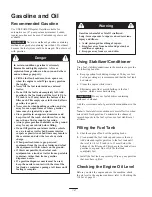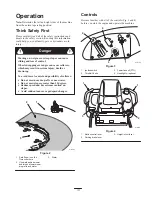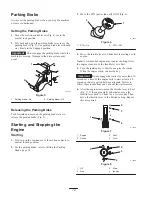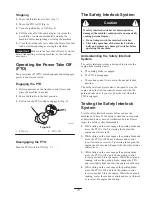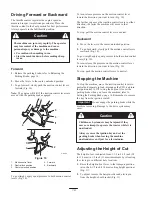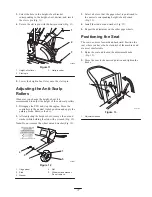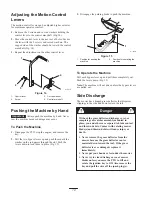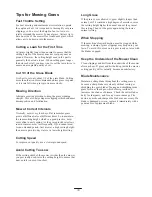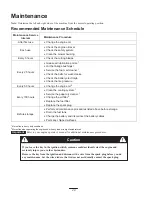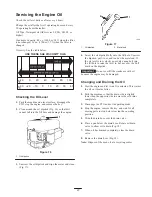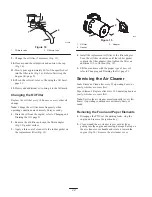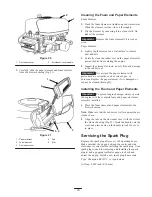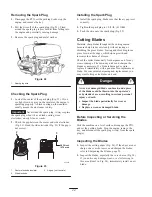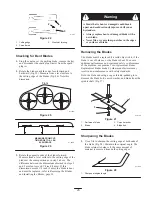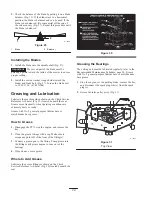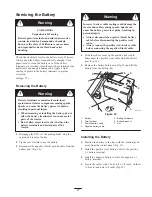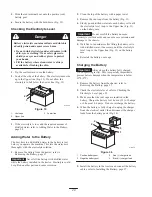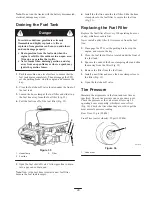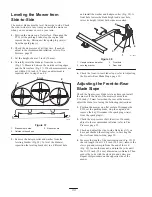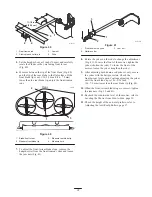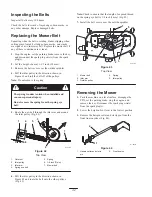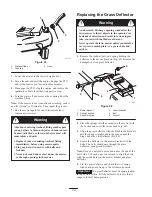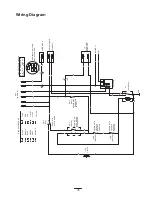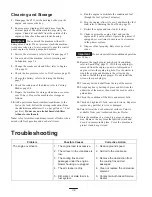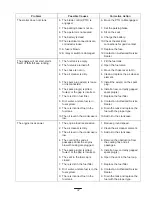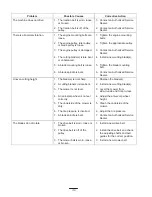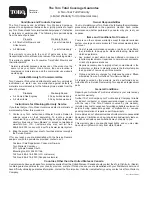
26
2. Check the balance of the blade by putting it on a blade
balancer (Fig. 29). If the blade stays in a horizontal
position, the blade is balanced and can be used. If the
blade is not balanced, file some metal off the end of
the sail area only (Fig. 27). Repeat this procedure until
the blade is balanced.
1
2
m–1855
Figure 29
1.
Blade
2.
Balancer
Installing the Blades
1. Install the blade onto the spindle shaft (Fig. 27).
Important
The curved part of the blade must be
pointing upward toward the inside of the mower to ensure
proper cutting.
2. Install the curved washer (cupped side toward the
blade) and blade bolt (Fig. 27). Torque the blade bolt
to 35–65 ft.-lb. (47–88 N
⋅
m).
Greasing and Lubrication
Lubricate the machine when shown on the Check Service
Reference Aid decal (Fig. 30) located beneath the seat.
Grease more frequently when operating conditions are
extremely dusty or sandy.
Grease with No. 2 general purpose lithium base or
molybdenum base grease.
How to Grease
1. Disengage the PTO, stop the engine, and remove the
key.
2. Clean the grease fittings with a rag. Make sure to
scrape any paint off of the front of the fitting(s).
3. Connect a grease gun to the fitting. Pump grease into
the fittings until grease begins to ooze out of the
bearings.
4. Wipe up any excess grease.
Where to Add Grease
Lubricate the grease fittings as shown on the Check
Service Reference Aid decal (Fig. 30) located beneath the
seat.
Figure 30
Greasing the Bearings
The cutting unit must be lubricated regularly; refer to the
Recommended Maintenance Schedule, page 20. Grease
with No. 2 general purpose lithium base or molybdenum
base grease.
1. Stop the engine, set the parking brake, remove the key,
and disconnect the spark plug wire(s) from the spark
plug(s).
2. Grease the idler pulley pivot (Fig. 31).
m–5157
Figure 31
Top View

